Brief Introduction to Taiwan Social Innovation Policies

Brief Introduction to Taiwan Social Innovation Policies
2021/09/13
1. Introduction
The Millennium Development Goals (MDGs)[1] set forth by the United Nations in 2000 are carried out primarily by nations and international organizations. Subsequently, the Sustainable Development Goals (SDGs) set forth by the United Nations in 2015 started to delegate the functions to organizations of all levels. Presently, there is a global awareness of the importance of balancing “economic growth”, “social progress”, and “environmental protection” simultaneously during development. In the above context, many similar concepts have arisen worldwide, including social/solidarity economy, social entrepreneurship and social enterprise, and social innovation.
Generally, social innovation aims to alter the interactions between various groups in society through innovative applications of technology or business models, and to find new ways to solve social problems through such alterations. In other words, the goal is to use innovative methods to solve social problems. The difference between social innovation and social enterprise is that social enterprise combines commercial power to achieve its social mission under a specific perspective, while social innovation creates social value through cooperation with and coordination among technology, resources, and communities under a diversified nature.
2. Overview of Taiwan Social Enterprise Policy
To integrate into the global community and assist in the development of domestic social innovation, Taiwan’s Executive Yuan launched the “Social Enterprise Action Plan” in 2014, which is the first policy initiative to support social enterprises (from 2014 to 2016). Under this policy initiative, through consulting with various ministries and applying methods such as “amending regulations”, “building platforms”, and “raising funds”, the initiative set to create an environment with favorable conditions for social innovation and start-ups. At this stage, the initiative was adopted under the principle of “administrative guidance before legislation” in order to encourage private enterprise development without excessive burden, and avoid regulations restricting the development of social enterprises, such as excessive definition of social enterprises. Moreover, for preserving the original types of these enterprises, this Action Plan did not limit the types of social enterprises to companies, non-profit organizations, or other specific types of organizations.
To sustain the purpose of the Social Enterprise Action Plan and to echo and reflect the 17 sustainable development goals proposed in SDGs by the United Nations, the Executive Yuan launched the “Social Innovation Action Plan” (effective from 2018 to 2022) in 2018 to establish a friendly development environment for social innovation and to develop diversified social innovation models through the concept of “openness, gathering, practicality, and sustainability”. In this Action Plan, “social innovation” referred to “social innovation organizations” that solve social problems through technology or innovative business models. The balancing of the three managerial goals of society, environment value, and profitability is the best demonstration of the concept of social innovation.
3. Government’s Relevant Social Enterprise Policy and Resources
The ministries of the Taiwan Government have been promoting relevant policies in accordance with the Social Innovation Action Plan issued by the Executive Yuan in 2018, such as the “Registration System for Social Innovation Enterprises” (counseling of social enterprises), the “Buying Power - Social Innovation Products and Services Procurement”, the “Social Innovation Platform” established by the Ministry of Economic Affairs, the “Social Innovation Manager Training Courses”, the “Promoting Social Innovation and Employment Opportunities” administered by the Ministry of Labor, and the “University Social Responsibility Program” published by the Ministry of Education. Among the above policies stands out the measures adopted by the Ministry of Economic Affairs, and a brief introduction of those policies are as follows:
i. Social Innovation Platform
To connect all resources involved in social issues to promote social innovation development in Taiwan, the Ministry of Economic Affairs established the “Social Innovation Platform”.[2] With visibility through the Social Innovation Platform, it has become more efficient to search for targets in a public and transparent way and to assist with the input of resources originally belonging to different fields in order to expand social influence.
As a digital platform gathering “social innovation issues in Taiwan,” the Social Innovation Platform covers multiple and complete social innovation resources, which include the “SDGs Map” constructed on the Social Innovation Platform, by which we can better understand how county and city governments in Taiwan implement SDGs and Voluntary Local Review Reports, and which allow us to search the Social Innovation Database[3] and the registered organizations, by which citizens, enterprises, organizations, and even local governments concerned with local development can find their partners expediently as possible, establish service lines to proactively assist public or private entities with their needs/resources, and continue to enable the regional revitalization organizations, ministries, and enterprises to identify and put forward their needs for social innovation through the function of “Social Innovation Proposals”, which assist social innovation organizations with visibility while advancing cooperation and expanding social influence.
In addition, the “Event Page” was established on the Social Innovation Platform and offers functions, such as the publishing, searching, and sorting of events in four major dimensions with respect to social innovation organization, governments, enterprises, and citizens; and encourages citizens, social innovation organizations, enterprises, and governments to devote themselves via open participation to continuously expande the influence of the (Civic Technology) Social Innovation Platform. The “Corporate Social Responsibility Report” collects the corporate social responsibility reports, observes the distribution of resources for sustainable development by corporations in Taiwan, offers filtering functions by regions, keyword, popular rankings, and or SDGs types, and provides contact information and a download function for previous years’ reports, in order to effectively assist social innovation organizations to obtain a more precise understanding of the status quo, needs, and trends with respect to their development of respective products and services.
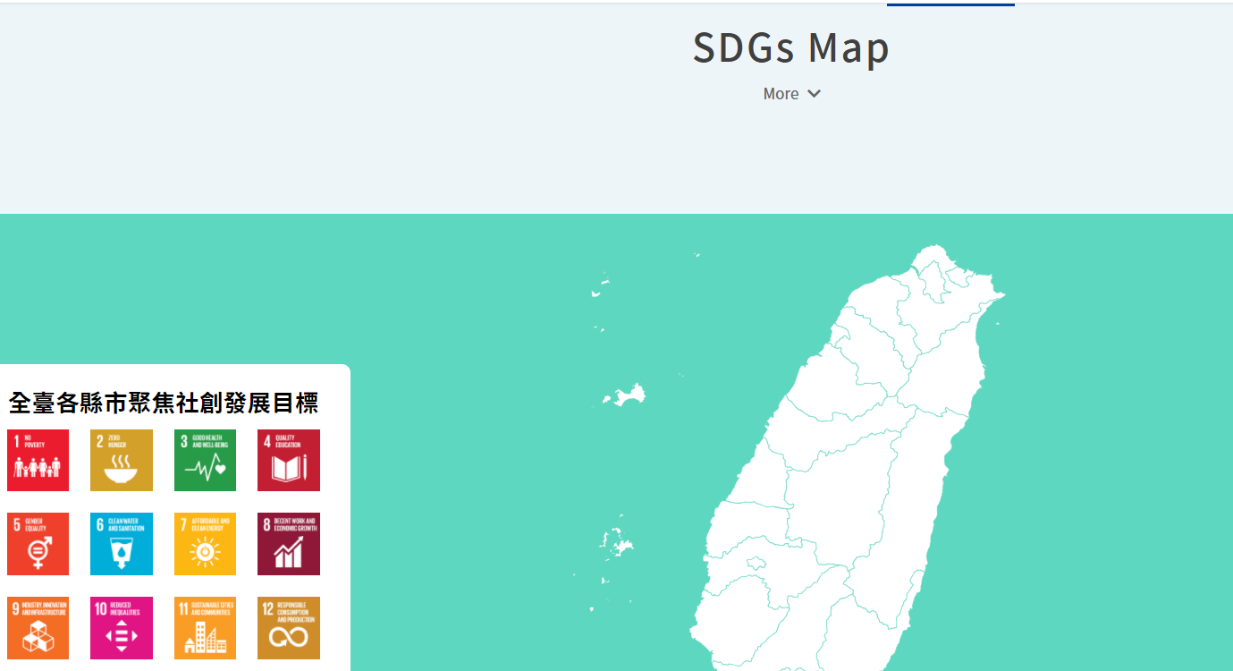
Figure 1: SDGs Map
Reference: Social Innovation Platform (https://si.taiwan.gov.tw/)
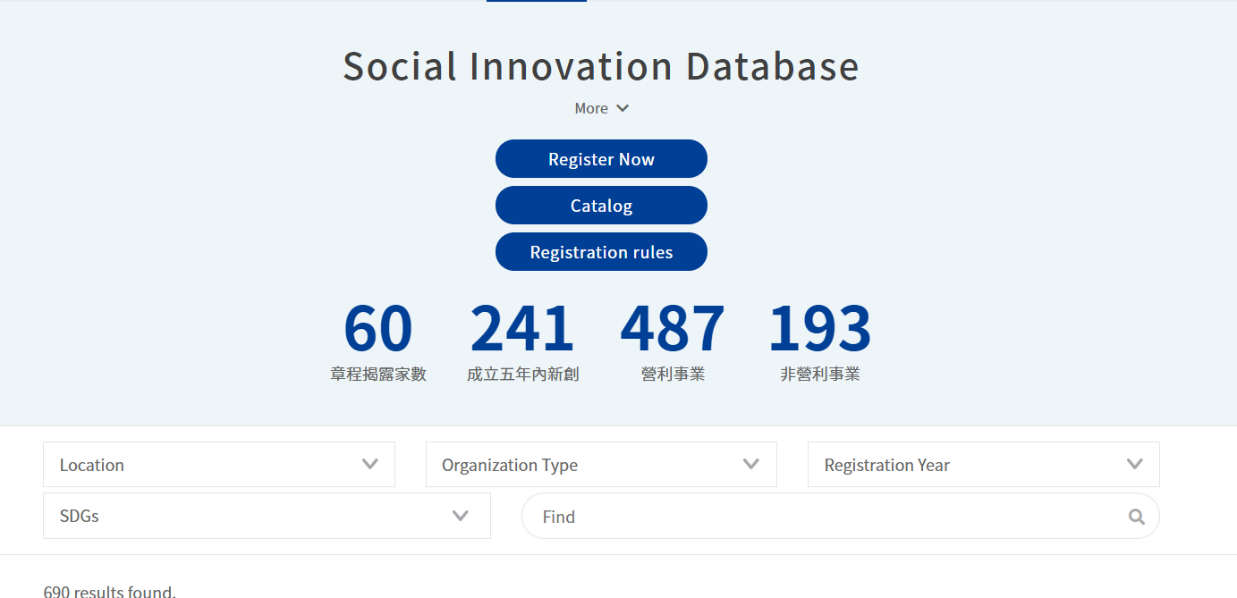
Figure 2: Social Innovation Database
Reference: Social Innovation Platform (https://si.taiwan.gov.tw/)
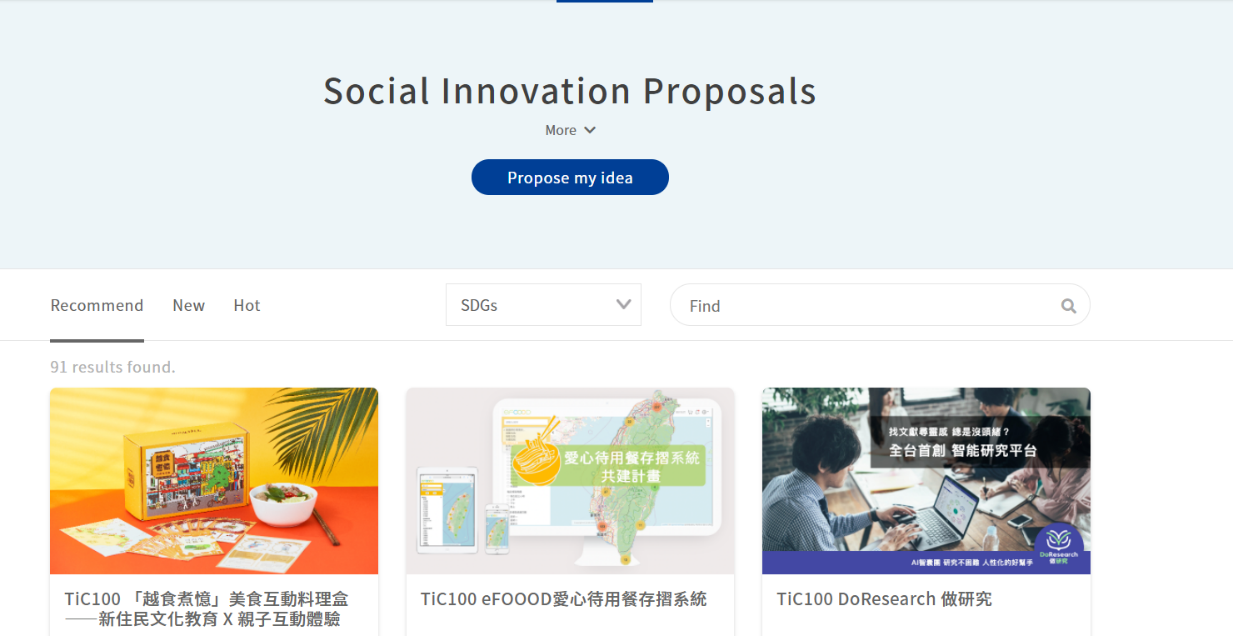
Figure 3: Social Innovation Proposals
Reference: Social Innovation Platform (https://si.taiwan.gov.tw/)

Figure 4: Event Page
Reference: Social Innovation Platform (https://si.taiwan.gov.tw/)
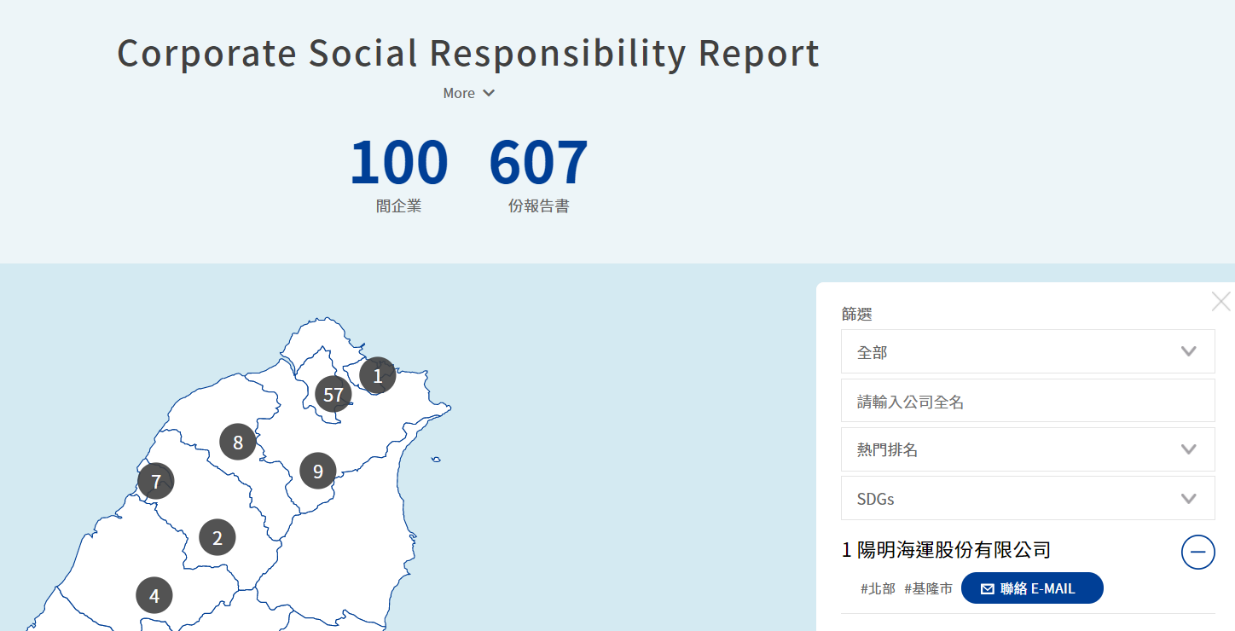
Figure 5: Corporate Social Responsibility Report
Reference: Social Innovation Platform (https://si.taiwan.gov.tw/)
ii. Social Innovation Database
To encourage social innovation organizations to disclose their social missions, products and services, and to guide society to understand the content of social innovation, and to assist the administrative ministries to be able to utilize such information, the Ministry of Economic Affairs issued the “Principles of Registration of Social Innovation Organizations” to establish the “Social Innovation Database”.
Once a social innovation organization discloses the items, such as its social missions, business model, or social influence, it may obtain the relevant promotional assistance resources, including becoming a trade partner with Buying Power (Social Innovation Products and Services Procurement), receiving exclusive consultation and assistance from professionals for social innovation organizations, and becoming qualified to apply to entering into the Social Innovation Lab. Moreover, the Ministry of Economic Affairs is simultaneously consolidating, identifying, and designating the awards and grants offered by the various ministries, policies and measures in respect of investment, and financing and assistance, as resources made available to registered entities.
As of 25 May 2021, there were 658 registered social innovation organizations and 96 Social Innovation Partners (enterprises with CSR or ESG resources that recognize the cooperation with social innovation under the social innovation thinking model may be registered as a “Social Innovation Partner”). The public and enterprises can search for organizations registered in the Social Innovation Database through the above-said Social Innovation Platform, the search ability of which advances the exposure of and the opportunities for cooperation with social innovation organizations.
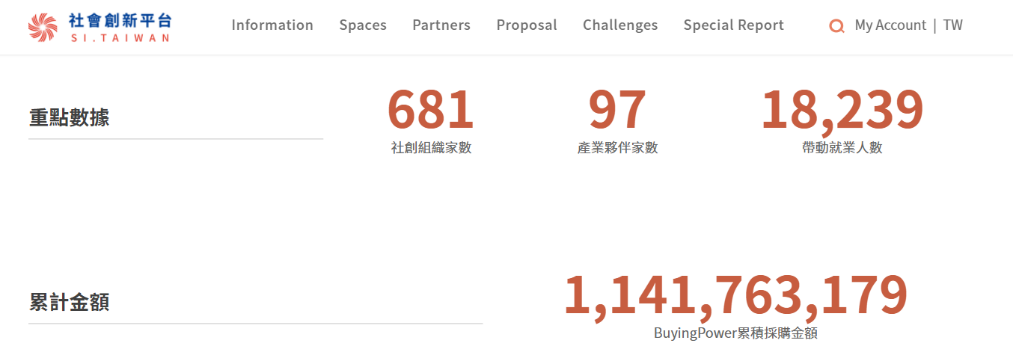
Figure 6: Numbers of registered social innovation organizations and accumulated value of purchases under Buying Power
Reference: Social Innovation Platform(https://si.taiwan.gov.tw/)
iii. Buying Power - Social Innovation Products and Services Procurement
In order to continue increasing the awareness on social innovation organizations and related issues and promote responsible consumption and production in Taiwan, as well as to raise the attention of the commercial sector to the sustainability-driven procurement models, the Ministry of Economic Affairs held the first “Buying Power - Social Innovation Products and Services Procurement” event in 2017. Through the award system under the Buying Power, it continues to encourage the governments, state-owned enterprises, private enterprises, and organizations to take the lead in purchasing products or services from social innovation organizations, to provide the relevant resources so as to assist social innovation organizations to obtain resources and to explore business opportunities in the markets, to practice responsible consumption and production, and to promote innovative cooperation between all industries and commerce and social innovation organizations.
The aim of the implementation of the Buying Power is to encourage the central and local governments, state-owned enterprises, private enterprises, and non-governmental organizations to purchase products or services from organizations registered in the Social Innovation Database, while prizes will be awarded based on the purchase amounts accumulated during the calculation period. The winners can obtain priority in applying for membership in the Social Innovation Partner Group, with corresponding member services, in the future.
Under the Social Innovation Platform, both the amount of purchase awards and the number of applicants for special awards continue to increase. So far, purchases have accumulated to a value of more than NT$1.1 billion (see Figure 6), and more than 300 organizations have proactively participated.
iv. Social Innovation Mark
In order to promote public awareness of social innovation, the Ministry of Economic Affairs has been charged with the commissioned task of promoting the Social Innovation Mark, and issued “ The Small and Medium Enterprise Administration of the Ministry of Economic Affairs Directions for Authorization of the Social Innovation Mark” as the standard for the authorization of the Social Innovation Mark. Social innovation organizations can use the Mark, through obtaining authorization, to hold Social Innovation Summits or other social innovation activities for promoting social innovation concepts.
In order to build the Mark as a conceptual symbol of social innovation, the Ministry of Economic Affairs has been using the Social Innovation Mark in connection with various social innovation activities, such as the Social Innovation Platform, the Buying Power, and the annual Social Innovation Summit. Taking the selection of sponsors of the Social Innovation Summit in 2022 as an example[4], only organizations that have obtained authorization of the Social Innovation Mark can use the Mark to hold the Social Innovation Summit.

Figure 7: The Social Innovation Mark of the Small and Medium Enterprise Administration, Ministry of Economic Affairs
IV. Conclusion
The “Organization for Economic Cooperation and Development” (OECD) regards social innovation as a new strategy for solving future social problems and as an important method for youth entrepreneurship and social enterprise development. Taiwan’s social innovation energy has entered a stage of expansion and development. Through the promotion of the “Social Innovation Action Plan,” the resources from the central and local governments are integrated to establish the Social Innovation Platform, the Social Innovation Database, the Social Innovation Lab, and the Social Innovation Mark. In addition, incentives such as the Buying Power have been created, manifesting the positive influence of Taiwan’s social innovation.
[1] MDGs are put forward by the United Nations in 2000, and are also the goals requiring all the 191 member states and at least 22 international organizations of the United Nations to be committed to on their best endeavors, including: 1. eradicating extreme poverty and hunger, 2. applying universal primary education, 3. promoting gender equality and empowering women, 4. reducing child mortality rates, 5. improving maternal health, 6. combatting HIV/AIDS, malaria, and other diseases, 7. ensuring environmental sustainability, and 8. establishing a global partnership for development.
[2] Please refer to the Social Innovation Platform: https://si.taiwan.gov.tw/.
[3] Please refer to the Social Innovation Database: https://si.taiwan.gov.tw/Home/Org_list.
[4] Please refer to the guidelines for the selection of sponsors of the 2022 Social Innovation Summit: https://www.moeasmea.gov.tw/files/6221/4753E497-B422-4303-A8D4-35AE0B4043A9
A Before and After Impact Comparison of Applying Statute for Industrial Innovation Article 23-1 Draft on Venture Capital Limited Partnerships I. Background Because the business models adopted by Industries, such as venture capital, film, stage performance and others, are intended to be temporary entities, and the existing business laws are not applicable for such industries,[1] the Legislature Yuan passed the “Limited Partnership Act” in June 2015,[2] for the purpose of encouraging capital injection into these industries. However, since the Act was passed, there are currently only nine limited partnerships listed on the Ministry of Economic Affairs' limited partnership information website. Among them, “Da-Zuo Limited Partnership (Germany) Taiwan Branch” and “Stober Antriebstechnik Limited Partnership (Germany) Taiwan Branch”, are branch companies established by foreign businesses, the remaining seven companies are audio video production and information service businesses. It is a pity that no venture capital company is adopting this format.[3] In fact, several foreign countries have set up supporting measures for their taxation systems targeting those business structures, such as limited partnerships. For example, the pass-through taxation method (or referred to as single entity taxation) is adopted by the United States, while Transparenzprinzip is used by Germany. These two taxation methods may have different names, but their core ideas are to pass the profits of a limited partnership to the earnings of partners.[4] However, following the adoption of the Limited Partnership Act in Taiwan, the Ministry of Finance issued an interpretation letter stating that because the current legal system confers an independent legal entity status to the business structure of a limited partnership, it should be treated as a profit-seeking business and taxed with Profit-Seeking Enterprise Income Tax.[5] Therefore, to actualize the legislative objective of encouraging innovative businesses organized under tenets of the Limited Partnership Act, the Executive Yuan presented a draft amendment for Article 23-1 of the Statute for Industrial Innovation (hereinafter referred to as the Draft), introducing the "Pass Through Taxation Principle" as adopted by several foreign countries. That is, a Limited Partnership will not be levied with the Profit-Seeking Enterprise Income Tax, but each partner will file income tax reports based on after-profit-gains from the partnership that are passed through to each partner. It is expected that the venture capital industry will now be encouraged to adopt the limited partnership structure, and thus increase investment capital in new ventures. II. The Pass Through Taxation Method is Applicable to Newly Established Venture Capital Limited Partnerships 1. The Requirements and Effects (1) The Requirements According to the provisions of Article 23-1 Paragraph 3 of the Draft, to be eligible for Pass Through Taxation, newly established venture capital limited partnerships must meet the following requirements: 1. The venture capital limited partnerships are established between January 1, 2017 and December 31, 2019. 2. Investment threshold of the total agreed capital contribution, total received capital contribution, and accumulated total capital contribution, within five years of the establishment of venture capital limited partnerships: Total Agreed Capital Contribution in the Limited Partnership Agreement Total Received Capital Contribution Accumulated Investment Amount for Start-up Companies The Year of Establishment 3 hundred million ✕ ✕ The Second Year ✕ ✕ The Third Year 1 hundred million ✕ The Fourth Year 2 hundred million Reaching 30 percent of the total received capital contribution of the year or 3 hundred million NT dollars. The Fifth Year 3 hundred million 3. The total amount, that an overseas company applies in capital and investments in actual business operations in Taiwan, reaches 50% of its total received capital contribution of that year. 4. In compliance with government policies. 5. Reviewed and approved by the central competent authority each year. (2) The Effects The effects of applying the provisions of Article 23-1 Paragraph 3 of the Draft are as follows: 1. Venture capital limited partnerships are exempt from the Profit-Seeking Enterprise Income Tax. 2. Taxation method for partners in a limited partnership after obtaining profit gains: (1) Pursuant to the Income Tax Act, Individual partners and for-profit business partners are taxed on their proportionally-calculated, distributed earnings. (2) Individual partners and foreign for-profit business partners are exempt from income tax on the stock earnings distributed by a limited partnership. 2. Benefit Analysis Before and After Applying Pass Through Taxation Method A domestic individual A, a domestic profit-making business B, and a foreign profit-making business C jointly form a venture capital limited partnership, One. The earnings distribution of the company One is 10%, 80% and 10% for A, B, and C partners, respectively. The calculated earnings of company One are one million (where eight hundred thousand are stock earnings, and two hundred thousand are non-stock earnings). How much income tax should be paid by the company One, and partners A, B, and C? (1) Pursuant to the Income Tax Act, before the amended draft: 1. One Venture Capital Limited Partnership Should pay Profit-Seeking Enterprise Income Tax = (NT$1,000,000 (earning) - NT$500,000[6])x12% (tax rate[7])=NT$60,000 2. Domestic Individual A Should file a comprehensive income report with business profit income =(NT$1,000,000-NT$60,000) x 10% (company One draft a voucher for net amount for A) + NT$60,000÷2×10% (deductible tax rate)= NT$97,000 Tax payable on profit earnings=NT$91,500×5%(tax rate)=NT$4,850 Actual income tax paid=NT$4,850 - NT$60,000÷2×10% (deductible tax rate) =NT$1,485 3. Domestic For-Profit Business B Pursuant to the provisions of Article 42 of the Income Tax Act, the net dividend or net income received by a profit-seeking company is not included in the income tax calculation. 4. Foreign For-Profit Business C Tax paid at its earning source=(NT$1,000,000 - NT$60,000) ×10% (earning distribution rate) ×20% (tax rate at earning source)=NT$18,800 (2) Applying Pass Through Taxation Method After Enacting the Amendment 1. One Venture Capital Limited Partnership No income tax. 2. Domestic Individual A Should pay tax=NT$800,000 (non-stock distributed earnings)×10% (earning distribution rate)×5% (comprehensive income tax rate)=NT$1,000 3. Domestic For-Profit Business B Pursuant to the provisions of Article 42 of the Income Tax Act, the net dividend or net income received by a profit-seeking company is not included in the income tax calculation. 4. Foreign For-Profit Business C Tax paid at its earning source=NT$800,000 (non-stock distributed earnings)×10%(earning distribution rate)×20% (tax rate at earning source)=NT$4,000 The aforementioned example shows that under the situation, where the earning distribution is the same and tax rate for the same taxation subject is the same, the newly-established venture capital limited partnerships and their shareholders enjoy a more favorable tax benefit with the adoption of pass through taxation method: Before the Amendment After the Amendment Venture Capital Limited Partnership NT$60,000 Excluded in calculation Shareholders Domestic Individual NT$1,850 NT$1,000 Domestic For-Profit Business Excluded in calculation Excluded in calculation Foreign For-Profit Business NT$18,800 NT$4,000 Sub-total NT$80,650 NT$5,000 III. Conclusion Compared to the corporate taxation, the application of the pass through taxation method allows for a significant reduction in tax burden. While developing Taiwan’s pass through tax scheme, the government referenced corporate taxation under the U.S. Internal Revenue Code (IRC), where companies that meet the conditions of Chapter S can adopt the “pass through” method, that is, pass the earnings to the owner, with the income of shareholders being the objects of taxation;[8] and studied the "Transparenzprinzip" adopted by the German taxation board for partnership style for-profit businesses. Following these legislative examples, where profits are identified as belonging to organization members,[9] the government legislation includes the adoption of the pass through taxation scheme for venture capital limited partnerships in the amended draft of Article 23-1 of the Statute for Industrial Innovation, so that the legislation is up to international standards and norms, while making an important breakthrough in the current income tax system. This is truly worthy of praise. [1] The Legislative Yuan Gazette, Vol. 104, No. 51, page 325. URL:http://misq.ly.gov.tw/MISQ//IQuery/misq5000Action.action [2] A View on the Limited Partnership in Taiwan, Cross-Strait Law Review, No. 54, Liao, Da-Ying, Page 42. [3] Ministry of Economic Affairs - Limited Partnership Registration Information URL: http://gcis.nat.gov.tw/lmpub/lms/dir.jsp?showgcislocation=true&agencycode=allbf [4] Same as annotate 2, pages 51-52. [5] Reference Letter of Interpretation dated December 18, 2015, Tai-Cai-Shui Zi No. 10400636640, the Ministry of Finance [6] First half of Paragraph 1 of Article 8 of the Income Basic Tax Act [7] Second half of Paragraph 1 of Article 8 of the Income Basic Tax Act [8] A Study on the Limited Partnership Act, Master’s degree thesis, College of Law, Soochow University, Wu, Tsung-Yeh, pages 95-96. [9] Reference annotate 2, pages 52.
Israel’s Technological Innovation SystemI.Introduction Recently, many countries have attracted by Israel’s technology innovation, and wonder how Israel, resource-deficiency and enemies-around, has the capacity to enrich the environment for innovative startups, innovative R&D and other innovative activities. At the same time, several cross-border enterprises hungers to establish research centers in Israel, and positively recruits Israel high-tech engineers to make more innovative products or researches. However, there is no doubt that Israel is under the spotlight in the era of innovation because of its well-shaped national technology system framework, innovative policies of development and a high level of R&D expenditure, and there must be something to learn from. Also, Taiwanese government has already commenced re-organization lately, how to tightly connect related public technology sectors, and make the cooperation more closely and smoothly, is a critical issue for Taiwanese government to focus on. Consequently, by the observation of Israel’s national technology system framework and technology regulations, Israel’s experience shall be a valuable reference for Taiwanese government to build a better model for public technology sectors for future cooperation. Following harsh international competition, each country around the world is trying to find out the way to improve its ability to upgrade international competitiveness and to put in more power to promote technology innovation skills. Though, while governments are wondering how to strengthen their countries’ superiority, because of the differences on culture and economy, those will influence governments’ points of view to form an appropriate national innovative system, and will come with a different outcome. Israel, as a result of the fact that its short natural resources, recently, its stunning performance on technology innovation system makes others think about whether Israel has any characteristics or advantages to learn from. According to Israeli Central Bureau of Statistics records, Israel’s national expenditures on civilian R&D in 2013 amounted to NIS 44.2 billion, and shared 4.2% of the GDP. Compared to 2012 and 2011, the national expenditure on civilian R&D in 2013, at Israel’s constant price, increased by 1.3%, following an increase of 4.5% in 2012 and of 4.1% in 2011. Owing to a high level of national expenditure poured in, those, directly and indirectly, makes the outputs of Israel’s intellectual property and technology transfer have an eye-catching development and performance. Based on Israeli Central Bureau of Statistics records, in 2012-2013, approximately 1,438 IP invention disclosure reports were submitted by the researchers of various universities and R&D institutions for examination by the commercialization companies. About 1,019 of the reports were by companies at the universities, an increase of 2.2% compared to 2010-2011, and a 1% increase in 2010-2011 compared to 2008-2009. The dominant fields of the original patent applicants were medicines (24%), bio-technology (17%), and medical equipment (13%). The revenues from sales of intellectual property and gross royalties amounted to NIS 1,881 million in 2012, compared to NIS 1,680 million in 2011, and increase of 11.9%. The dominant field of the received revenues was medicines (94%). The revenues from sales of intellectual property and gross royalties in university in 2012 amounted to NIS 1,853 million in 2012, compared to NIS 1,658 million in 2011, an increase of 11.8%. Therefore, by the observation of these records, even though Israel only has 7 million population, compared to other large economies in the world, it is still hard to ignore Israel’s high quality of population and the energy of technical innovation within enterprises. II.The Recent Situation of Israel’s Technology Innovation System A.The Determination of Israel’s Technology Policy The direction and the decision of national technology policy get involved in a country’s economy growth and future technology development. As for a government sector deciding technology policy, it would be different because of each country’s government and administrative system. Compared to other democratic countries, Israel is a cabinet government; the president is the head of the country, but he/she does not have real political power, and is elected by the parliament members in every five years. At the same time, the parliament is re-elected in every four years, and the Israeli prime minister, taking charge of national policies, is elected from the parliament members by the citizens. The decision of Israel’s technology policy is primarily made by the Israeli Ministers Committee for Science and Technology and the Ministry of Science and Technology. The chairman of the Israeli Ministry Committee for Science and Technology is the Minister of Science and Technology, and takes charge of making the guideline of Israel’s national technology development policy and is responsible for coordinating R&D activities in Ministries. The primary function of the Ministry of Science and Technology is to make Israel’s national technology policies and to plan the guideline of national technology development; the scope includes academic research and applied scientific research. In addition, since Israel’s technology R&D was quite dispersed, it means that the Ministries only took responsibilities for their R&D, this phenomenon caused the waste of resources and inefficiency; therefore, Israel government gave a new role and responsibility for the Chief Scientists Forum under the Ministry of Science and Technology in 2000, and wished it can take the responsibility for coordinating R&D between the government’s sectors and non-government enterprises. The determination of technology policy, however, tends to rely on counseling units to provide helpful suggestions to make technology policies more intact. In the system of Israel government, the units playing a role for counseling include National Council for Research and Development (NCRD), the Steering Committee for Scientific Infrastructure, the National Council for Civil Research and Development (MOLMOP), and the Chief Scientists Forums in Ministries. Among the aforementioned units, NCRD and the Steering Committee for Scientific Infrastructure not only provide policy counseling, but also play a role in coordinating R&D among Ministries. NCRD is composed by the Chief Scientists Forums in Ministries, the chairman of Planning and Budgeting Committee, the financial officers, entrepreneurs, senior scientists and the Dean of Israel Academy of Sciences and Humanities. NCRD’s duties include providing suggestions regarding the setup of R&D organizations and related legal system, and advices concerning how to distribute budgets more effectively; making yearly and long-term guidelines for Israel’s R&D activities; suggesting the priority area of R&D; suggesting the formation of necessary basic infrastructures and executing the priority R&D plans; recommending the candidates of the Offices of Chief Scientists in Ministries and government research institutes. As for the Steering Committee for Scientific Infrastructure, the role it plays includes providing advices concerning budgets and the development framework of technology basic infrastructures; providing counsel for Ministries; setting up the priority scientific plans and items, and coordinating activities of R&D between academic institutes and national research committee. At last, as for MOLMOP, it was founded by the Israeli parliament in 2002, and its primary role is be a counseling unit regarding technology R&D issues for Israel government and related technology Ministries. As for MOLMOP’s responsibilities, which include providing advices regarding the government’s yearly and long-term national technology R&D policies, providing the priority development suggestion, and providing the suggestions for the execution of R&D basic infrastructure and research plans. B.The Management and Subsidy of Israel’s Technology plans Regarding the institute for the management and the subsidy of Israel’s technology plans, it will be different because of grantee. Israel Science Foundation (ISF) takes responsibility for the subsidy and the management of fundamental research plans in colleges, and its grantees are mainly focused on Israel’s colleges, high education institutes, medical centers and research institutes or researchers whose areas are in science and technical, life science and medicine, and humanity and social science. As for the budget of ISF, it mainly comes from the Planning and Budgeting Committee (PBC) in Israel Council for Higher Education. In addition, the units, taking charge of the management and the subsidy of technology plans in the government, are the Offices of the Chief Scientist in Ministries. Israel individually forms the Office of the Chief Scientist in the Ministry of Agriculture and Rural Development, the Ministry of Communications, the Ministry of Defense, the Ministry of National Infrastructures, Energy and Water Resources, the Ministry of Health and the Ministry of Economy. The function of the Office of the Chief Scientist not only promotes and inspires R&D innovation in high technology industries that the Office the Chief Scientist takes charge, but also executes Israel’s national plans and takes a responsibility for industrial R&D. Also, the Office of the Chief Scientist has to provide aid supports for those industries or researches, which can assist Israel’s R&D to upgrade; besides, the Office of the Chief Scientists has to provide the guide and training for enterprises to assist them in developing new technology applications or broadening an aspect of innovation for industries. Further, the Office of the Chief Scientists takes charge of cross-country R&D collaboration, and wishes to upgrade Israel’s technical ability and potential in the area of technology R&D and industry innovation by knowledge-sharing and collaboration. III.The Recent Situation of the Management and the Distribution of Israel’s Technology Budget A.The Distribution of Israel’s Technology R&D Budgets By observing Israel’s national expenditures on civilian R&D occupied high share of GDP, Israel’s government wants to promote the ability of innovation in enterprises, research institutes or universities by providing national resources and supports, and directly or indirectly helps the growth of industry development and enhances international competitiveness. However, how to distribute budgets appropriately to different Ministries, and make budgets can match national policies, it is a key point for Israel government to think about. Following the Israeli Central Bureau of Statistics records, Israel’s technology R&D budgets are mainly distributed to some Ministries, including the Ministry of Science and Technology, the Ministry of Economy, the Ministry of Agriculture and Rural Development, the Ministry of National Infrastructures, Energy and Water Resources, the Israel Council for Higher Education and other Ministries. As for the share of R&D budgets, the Ministry of Science and Technology occupies the share of 1.7%, the Ministry of Economy is 35%, the Israel Council for Higher Education is 45.5%, the Ministry of Agriculture and Rural Development is 8.15%, the Ministry of National Infrastructures, Energy and Water Resources is 1.1%, and other Ministries are 7.8% From observing that Israel R&D budgets mainly distributed to several specific Ministries, Israel government not only pours in lot of budgets to encourage civilian technology R&D, to attract more foreign capitals to invest Israel’s industries, and to promote the cooperation between international and domestic technology R&D, but also plans to provide higher education institutes with more R&D budgets to promote their abilities of creativity and innovation in different industries. In addition, by putting R&D budgets into higher education institutes, it also can indirectly inspire students’ potential innovation thinking in technology, develop their abilities to observe the trend of international technology R&D and the need of Israel’s domestic industries, and further appropriately enhance students in higher education institutes to transfer their knowledge into the society. B.The Management of Israel’s Technology R&D Budgets Since Israel is a cabinet government, the cabinet takes responsibility for making all national technology R&D policies. The Ministers Committee for Science and Technology not only has a duty to coordinate Ministries’ technology policies, but also has a responsibility for making a guideline of Israel’s national technology development. The determination of Israel’s national technology development guideline is made by the cabinet conference lead by the Prime Minister, other Ministries does not have any authority to make national technology development guideline. Aforementioned, Israel’s national technology R&D budgets are mainly distributed to several specific Ministries, including the Ministry of Science and Technology, the Ministry of Economy, the Ministry of Agriculture and Rural Development, the Ministry of National Infrastructures, Energy and Water Resources, the Israel Council for Higher Education, and etc. As for the plan management units and plan execution units in Ministries, the Office of the Chief Scientist is the plan management unit in the Ministry of Science and Technology, and Regional Research and Development Centers is the plan execution unit; the Office of the Chief Scientist is the plan management unit in the Ministry of Economy, and its plan execution unit is different industries; the ISF is the plan management units in the Israel Council for Higher Education; also, the Office of the Chief Scientist is the plan management unit in the Ministry of Agriculture, and its plan execution units include the Institute of Field and Garden Corps, the Institute of Horticulture, the Institute of Animal, the Institute of Plan Protection, the Institute of Soil, Water & Environmental Sciences, the Institute for Technology and Storage of Agriculture Products, the Institute of Agricultural Engineering and Research Center; the Office of the Chief Scientist is the plan management unit in the Ministry of National Infrastructures, Energy and Water Resources, and its plan execution units are the Geological Survey of Israel, Israel Oceanographic and Limnological Research and the Institute of Earth and Physical. As for other Ministries, the Offices of the Chief Scientist are the plan management units for Ministries, and the plan execution unit can take Israel National Institute for Health Policy Research or medical centers for example.
The Research on ownership of cell therapy productsThe Research on ownership of cell therapy products 1. Issues concerning ownership of cell therapy products Regarding the issue of ownership interests, American Medical Association(AMA)has pointed out in 2016 that using human tissues to develop commercially available products raises question about who holds property rights in human biological materials[1]. In United States, there have been several disputes concern the issue of the whether the donor of the cell therapy can claim ownership of the product, including Moore v. Regents of University of California(1990)[2], Greenberg v. Miami Children's Hospital Research Institute(2003)[3], and Washington University v. Catalona(2007)[4]. The courts tend to hold that since cells and tissues were donated voluntarily, the donors had already lost their property rights of their cells and tissues at the time of the donation. In Moore case, even if the researchers used Moore’s cells to obtain commercial benefits in an involuntary situation, the court still held that the property rights of removed cells were not suitable to be claimed by their donor, so as to avoid the burden for researcher to clarify whether the use of cells violates the wishes of the donors and therefore decrease the legal risk for R&D activities. United Kingdom Medical Research Council(MRC)also noted in 2019 that the donated human material is usually described as ‘gifts’, and donors of samples are not usually regarded as having ownership or property rights in these[5]. Accordingly, both USA and UK tends to believe that it is not suitable for cell donors to claim ownership. 2. The ownership of cell therapy products in the lens of Taiwan’s Civil Code In Taiwan, Article 766 of Civil Code stipulated: “Unless otherwise provided by the Act, the component parts of a thing and the natural profits thereof, belong, even after their separation from the thing, to the owner of the thing.” Accordingly, many scholars believe that the ownership of separated body parts of the human body belong to the person whom the parts were separated from. Therefore, it should be considered that the ownership of the cells obtained from the donor still belongs to the donor. In addition, since it is stipulated in Article 406 of Civil Code that “A gift is a contract whereby the parties agree that one of the parties delivers his property gratuitously to another party and the latter agrees to accept it.”, if the act of donation can be considered as a gift relationship, then the ownership of the cells has been delivered from donor to other party who accept it accordingly. However, in the different versions of Regenerative Medicine Biologics Regulation (draft) proposed by Taiwan legislators, some of which replace the term “donor” with “provider”. Therefore, for cell providers, instead of cell donors, after providing cells, whether they can claim ownership of cell therapy product still needs further discussion. According to Article 69 of the Civil Code, it is stipulated that “Natural profits are products of the earth, animals, and other products which are produced from another thing without diminution of its substance.” In addition, Article 766 of the Civil Code stipulated that “Unless otherwise provided by the Act, the component parts of a thing and the natural profits thereof, belong, even after their separation from the thing, to the owner of the thing.” Thus, many scholars believe that when the product is organic, original substance and the natural profits thereof are all belong to the owner of the original substance. For example, when proteins are produced from isolated cells, the proteins can be deemed as natural profits and the ownership of proteins and isolated cells all belong to the owner of the cells[6]. Nevertheless, according to Article 814 of the Civil Code, it is stipulated that “When a person has contributed work to a personal property belonging to another, the ownership of the personal property upon which the work is done belongs to the owner of the material thereof. However, if the value of the contributing work obviously exceeds the value of the material, the ownership of the personal property upon which the work is done belongs to the contributing person.” Thus, scholar believes that since regenerative medical technology, which induces cell differentiation, involves quite complex biotechnology technology, and should be deemed as contributing work. Therefore, the ownership of cell products after contributing work should belongs to the contributing person[7]. Thus, if the provider provides the cells to the researcher, after complex biotechnology contributing work, the original ownership of the cells should be deemed to have been eliminated, and there is no basis for providers to claim ownership. However, since the development of cell therapy products involves a series of R&D activities, it still need to be clarified that who is entitled to the ownership of the final cell therapy products. According to Taiwan’s Civil Code, the ownership of product after contributing work should belongs to the contributing person. However, when there are numerous contributing persons, which person should the ownership belong to, might be determined on a case-by-case basis. 3. Conclusion The biggest difference between cell therapy products and all other small molecule drugs or biologics is that original cell materials are provided by donors or providers, and the whole development process involves numerous contributing persons. Hence, ownership disputes are prone to arise. In addition to the above-discussed disputes, United Kingdom Co-ordinating Committee on Cancer Research(UKCCCR)also noted that there is a long list of people and organizations who might lay claim to the ownership of specimens and their derivatives, including the donor and relatives, the surgeon and pathologist, the hospital authority where the sample was taken, the scientists engaged in the research, the institution where the research work was carried out, the funding organization supporting the research and any collaborating commercial company. Thus, the ultimate control of subsequent ownership and patent rights will need to be negotiated[8]. Since the same issues might also occur in Taiwan, while developing cell therapy products, carefully clarifying the ownership between stakeholders is necessary for avoiding possible dispute. [1]American Medical Association [AMA], Commercial Use of Human Biological Materials, Code of Medical Ethics Opinion 7.3.9, Nov. 14, 2016, https://www.ama-assn.org/delivering-care/ethics/commercial-use-human-biological-materials (last visited Jan. 3, 2021). [2]Moore v. Regents of University of California, 793 P.2d 479 (Cal. 1990) [3]Greenberg v. Miami Children's Hospital Research Institute, 264 F. Suppl. 2d, 1064 (SD Fl. 2003) [4]Washington University v. Catalona, 490 F 3d 667 (8th Cir. 2007) [5]Medical Research Council [MRC], Human Tissue and Biological Samples for Use in Research: Operational and Ethical Guidelines, 2019, https://mrc.ukri.org/publications/browse/human-tissue-and-biological-samples-for-use-in-research/ (last visited Jan. 3, 2021). [6]Wen-Hui Chiu, The legal entitlement of human body, tissue and derivatives in civil law, Angle Publishing, 2016, at 327. [7]id, at 341. [8]Okano, M., Takebayashi, S., Okumura, K., Li, E., Gaudray, P., Carle, G. F., & Bliek, J. UKCCCR guidelines for the use of cell lines in cancer research.Cytogenetic and Genome Research,86(3-4), 1999, https://europepmc.org/backend/ptpmcrender.fcgi?accid=PMC2363383&blobtype=pdf (last visited Jan. 3, 2021).
Taiwan Planed Major Promoting Program for Biotechnology and Pharmaceutical IndustryTaiwan Government Lauched the “Biotechnology Action Plan” The Taiwan Government has planned to boost the support and develop local industries across the following six major sectors: biotechnology, tourism, health care, green energy, innovative culture and post-modern agriculture. As the biotechnology industry has reached its maturity by the promulgation of "Biotech and New Pharmaceutical Development Act" in July, 2007, it will be the first to take the lead among the above sectors. Thus, the Executive Yuan has launched the Biotechnology Action Plan as the first project in building the leading industry sectors, to upgrade local industries and stimulate future economic growth. Taiwan Government Planed to Promote the Biotechnology and Other newly Industries by Investing Two Hundred Billion To expand every industrial scale, enhance industrial value, increase the value around the main industrial field, and to encourage the industrial development by government investments for creating the civil working opportunities to reach the goal of continuous economic development, the Executive Yuan Economic Establishment commission has expressed that, the government has selected six newly industrials including "Biotechnology", "Green Energy", "Refined Agriculture", "Tourism", "Medicare", and "Culture Originality" on November 19, 2009 to promote our national economic growth. The government will invest two hundred billion NT dollars to support the industrial development aggressively and to enhance the social investments from year 2009 to 2012. According to a Chung-Hua Institution for Economic Research report, the future growth rate will reach 8.16% after the evaluation, Hence, the future of the industries seems to be quite bright. Currently, the government plans to put money into six newly industries through the existing ways for investment. For instance, firstly, in accordance with the "Act For The Development Of Biotech And New Pharmaceuticals Industry" article 5 provision 1 ",for the purpose of promoting the Biotech and New Pharmaceuticals Industry, a Biotech and New Pharmaceuticals Company may, for a period of five years from the time it is subject to corporate income tax, enjoy a reduction in its corporate income tax payable for up to thirty-five percent (35%) of the total funds invested in research and development ("R&D") and personnel training each year; provided, however, that if the R&D expenditure of a particular year exceeds the average R&D expenditure of the previous two years or if the personnel training expenditure of a particular year exceeds the average personnel training expenditure of the previous two years, fifty percent (50%) of the amount in excess of the average may be used to credit against the amount of corporate income tax payable. Secondly, according to same act of the article 6 provision 1 ", in order to encourage the establishment or expansion of Bio tech and New Pharmaceuticals Companies, a profit-seeking enterprise that (i) subscribes for the stock issued by a Biotech and New Pharmaceuticals Company at the time of the latter's establishment or subsequent expansion; and (ii) has been a registered shareholder of the Biotech and New Pharmaceuticals Company for a period of three (3) years or more, may, for a period of five years from the time it is subject to corporate income tax, enjoy a reduction in its corporate income tax payable for up to twenty percent (20%) of the total amount of price paid for the subscription of shares in such Biotech and New Pharmaceuticals Company; provided that such Biotech and New Pharmaceuticals Company has not applied for exemption from corporate income tax or shareholders investment credit based on the subscription price under other applicable laws and regulations. Thirdly, to promote the entire biotechnological industry development, the government has drafted the "Biotechnology Takeoff Package" for subsidizing the startup´s social investment companies which can satisfy the conditions to invest in "Drug discovery", "Medical Device" or other related biotech industries up to 5 billion with the capital invest in domestic industry over 50%, , with operating experience of multinational biotech investment companies with capital over 150 million in related industrial fields, and with the working experiences of doctor accumulated up to 60 years. Additionally, the refined agriculture industry field has not only discovered the gene selected products, but also combined the tourism with farming business for new business model creation. According to the "Guidelines for Preferential Loans for the Upgrading of Tourism Enterprises" point 4 provision 1, the expenditure for spending on machine, instruments, land or repairing can be granted a preferential loan in accordance with the rule of point 6, and government will provide a subsidy of interest for loaning Tourism Enterprises with timely payments. At last, Council for Economic Planning and Development also points out because most of technology industry has been impacted seriously by fluctuation of international prosperity due to conducting the export trade oriented strategy. Furthermore, the aspects of our export trade of technology industry have been impacted by the U.S. financial crisis and the economic decay in EU and US; and the industrial development seems to face the problem caused by over centralization in Taiwan. Hence, the current framework of domestic industry should be rearranged and to make it better by promoting the developmental project of six newly industries. Taiwan Government Had Modifies Rules to Accelerate NDA Process and Facilitate Development of Clinical Studies in Taiwan In July 2007, the "Biotech and New Pharmaceutical Development Act" modified many regulations related to pharmaceutical administration, taxes, and professionals in Taiwan. In addition, in order to facilitate the development of the biotechnology and pharmaceutical industries, the government has attempted to create a friendly environment for research and development by setting up appropriate regulations and application systems. These measures show that the Taiwanese government is keenly aware that these industries have huge potential value. To operate in coordination with the above Act and to better deal with the increasing productivity of pharmaceutical R&D programs in Taiwan, the Executive Yuan simplified the New Drug Application (NDA) process to facilitate the submission that required Certificate of Pharmaceutical Product (CPP) for drugs with new ingredients. The current NDA process requires sponsors to submit documentation as specified by one of the following four options: (1) three CPPs from three of "ten medically-advanced countries," including Germany, the U.S., England, France, Japan, Switzerland, Canada, Australia, Belgium, and Sweden; (2) one CPP from the U.S., Japan, Canada, Australia, or England and one CPP from Germany, France, Switzerland, Sweden, or Belgium; (3) a Free Sale Certificate (FSC) from one of ten medically-advanced countries where the pharmaceuticals are originally produced and one CPP from one of the other nine countries; or (4) a CPP from the European Medicines Agency. Thus, the current NDA process requires sponsors to spend inordinate amounts of time and incur significant costs to acquire two or three FSCs or CPPs from ten medically-advanced countries in order to submit an NDA in Taiwan. According to the new rules, sponsors will not have to submit above CPPs if (1) Phase I clinical studies have been conducted in Taiwan, and Phase III Pivotal Trial clinical studies have been simultaneously conducted both in Taiwan and in another country or (2) Phase II and Phase III Pivotal Trial clinical studies have been simultaneously conducted both in Taiwan and in another country. Besides, the required minimum numbers of patients were evaluated during each above phase. Therefore, sponsors who conduct clinical studies in Taiwan and in another country simultaneously could reduce their costs and shorten the NDA process in Taiwan. The new rules aim to encourage international pharmaceutical companies to conduct clinical studies in Taiwan or to conduct such studies cooperatively with Taiwanese pharmaceutical companies. Such interactions will allow Taiwanese pharmaceutical companies to participate in development and implementation of international clinical studies in addition to benefiting from the shortened NDA process. Therefore, the R&D abilities and the internationalization of the Taiwanese pharmaceutical industry will be improved.
- Impact of Government Organizational Reform to Scientific Research Legal System and Response Thereto (1) – For Example, The Finnish Innovation Fund (“SITRA”)
- The Demand of Intellectual Property Management for Taiwanese Enterprises
- Blockchain in Intellectual Property Protection
- Impact of Government Organizational Reform to Research Legal System and Response Thereto (2) – Observation of the Swiss Research Innovation System
- Recent Federal Decisions and Emerging Trends in U.S. Defend Trade Secrets Act Litigation
- The effective and innovative way to use the spectrum: focus on the development of the "interleaved/white space"
- Copyright Ownership for Outputs by Artificial Intelligence
- Impact of Government Organizational Reform to Research Legal System and Response Thereto (2) – Observation of the Swiss Research Innovation System

